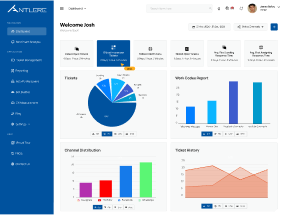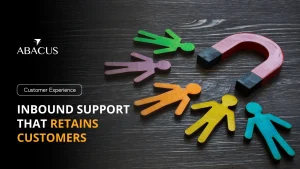In the fast-moving business arena, success is fully coupled with sales, and one loud question echoes: Which of inside sales or outside sales contribute the most to a company’s success? These approaches play very different roles in customer contact, and they are superior for generating sales in very different ways. So let’s talk about these differences, benefits and when one might be better than the other.
Understanding Inside Sales
Inside sales, happens to be remote selling that happens primarily through the digital channels or going on the computer or something like that. Through phone calls, emails, video conferencing or CRMs, sales reps facilitate prospect communication without needing face to face interactions. This is a highly cost effective and scalable approach suitable for companies that have a large customer base or multiple number of geographically dispersed clients.
Key Responsibilities of Inside Sales
- Inside sales professionals utilize two main strategies to connect with clients: targeted outreach and cold calling.
Targeted Outreach
Inside sales associates, when conversely dedicated to targeted outreach, work to maintain relationships with established customers. As the primary contact for these customers, they help with orders, troubleshoot problems, and anything else the customers need. Their attempt is to develop a robust and long-enduring relationship to support that they won’t float through your business if someone needs them, which leads to a steady income for a company.
Cold Calling
Cold calling is connecting with one who may have not been expecting a sales conversation. With that, this method is usually more difficult, because these people may not be willing to buy right at this moment. Regardless of the approach, inside sales professionals should possess several essential skills:
Persistence: Building a relationship with current clients regularly takes multiple calls and phone calls. Resilience rules when it comes to cold calling – you have to try and try again until you find an interested customer.
Communication: It is extremely important that can be able to articulate ideas clearly. The need for effective communication is great since most interactions happen via phone calls, texts, or email.
Intuition: It’s important to be able to read clients’ responses. It is left to sales associates to measure how shoppers are reacting and to modify their sales approach to increase their chances of closing a sale.
Computer Proficiency: Often computers are needed for inside sales representatives to track all their activities, record the contacts, and process orders and payments.

Benefits of Inside Sales:
Cost Efficiency: Reduce travel expenses, or accomplish more calls or meetings in shorter time.
Scalability: You should be able to easily scale with a lean team to take on more leads.
Flexibility: It allows sales reps to handle many accounts at once, and switch gears quickly.
Real-time Data: It provides immediate access to the CRM and analytics, to fine-tune strategies!
Best Fit Scenarios: With smaller ticket sales and broad geographic markets, inside sales is typically the path of choice for B2B SaaS businesses. Furthermore, inside sales are doing exceedingly well in industries where there is a lot of lead volume although the level of customer interaction is low.
Understanding Outside Sales
The direct personal interaction is what outside sales is based on. Because sales reps are required to meet clients in person, attend industry events, and deliver in person presentations, they often tend to build stronger relationships with important decision makers. This is the perfect strategy for high stakes, complex sales that must be handled one on one.
Key Responsibilities of Outside Sales
- An outside sales representative’s duties differ depending on their work environment as well as if they are working with existing customers or cold leads.
Building Relationships
Usually, outside sales reps manage a territory in relationship building. Their job is to visit existing clients and spend time making phone calls to keep those relationships active, much like a salesperson, and to keep the orders current as they become due. They present the company’s products or services to potential clients or to close deals.
Engaging Cold Leads
Other outside sales representatives focus on cold leads – selling in a retail environment or at an event, like a festival or expo. They talk to new clients and gather their contact information for the eventual follow-up.
Regardless of their focus, outside sales professionals should have several key skills:
Interpersonal Skills: Because a good sales record requires both winning over new and existing clients, a friendly demeanor and personal charm are necessary.
Organizational Skills: With more paperwork and details to juggle than their inside counterparts, outside sales reps tend to spend more time on administrative details than many people realize. For tracking order sheets, promotions, contact information and scheduling, it’s important to be organized.
Effective Communication: For sales professionals to give their pitches in a way that it is easily understandable and relatable to their clients.
Basic Calculation Skills: It can be persuasive when it comes to in person sales where it allows you to have a compelling example of possible savings pretty quickly.
Understanding the functions and requisite skill sets both for inside and outside sales, companies can have a better handle on how to orient their sales teams for success.
Engaging Cold Leads
Relationship Building: Deeper connections and trust come from in-person meetings.
Complex Sales Solutions: Good for industries that need demonstrations or on-site presentations.
Higher Conversion Rates: Higher engagement and conversion can result from face-to-face interactions.
Adaptability to Client Needs: This allows sales reps to adjust their pitch on the fly based on real-time responses.
Best Fit Scenarios: When it comes to outside sales, the trust, high touch, or product demo element makes it most effective in industries like healthcare, real estate, or enterprise software.
Key Differences Inside Sales vs Outside Sales
Criteria | Inside Sales | Outside Sales |
Interaction Type | Remote (phone, video calls, email) | In-person |
Cost | Lower due to lack of travel expenses | Higher due to travel and meeting logistics |
Lead Volume | High volume, quick follow-up | Lower volume, more time-intensive |
Relationship Depth | Moderate, depends on digital rapport | High, with deeper personal relationships |
Scalability | Highly scalable | Less scalable, depends on available reps |

Which One is Right for Your Business?
When picking between inside and outside sales, you first need to think about your product, target market, and objective. For startups and businesses with tight budgets, inside sales may be a way to ramp up quickly. Outside sales may be a necessity for maintaining customer relationships with high-ticket customers if you’re a well-established business.
Best of Both - Inside Sales vs Outside Sales
In many companies, today they adopt a hybrid model which deals with both inside and outside sales. It gives flexibility as inside sales can concentrate on initial outreach and qualification, while outside sales are aimed at highly skilled leads that require in depth presentations.
Final Thoughts
But there are pros and cons with both inside and outside sales and we know at Abacus Outsourcing the benefits to your business. We combine the efficiency of the inside sales with the personal touch of outside sales to help you create a tailored strategy that matches your target audience and your product offerings. Let us partner together and open the way to your full sales revenue potential with results that solution your expectations and delight your customers at every step.
Partner with us to unlock your full sales potential, delivering results that exceed expectations while enhancing customer satisfaction at every step.

FAQ's
Inside sales refers to a sales approach conducted remotely, focusing on building customer relationships through phone calls, emails, and online meetings. The inside sales definition highlights its efficiency in reaching a broader audience without face-to-face interaction, making it a scalable and cost-effective method.
Outside sales involve in-person meetings with clients at their locations, trade shows, or industry events. Unlike inside sales, which rely on remote communication, outside sales focus on face-to-face interactions, offering a personalized approach. The outside sales meaning emphasizes building strong client relationships through direct engagement.
The choice between inside sales and outside sales depends on your business model, target audience, and product offering. Inside sales excel in efficiency and scalability, providing a cost-effective way to connect with customers. On the other hand, outside sales emphasize direct, in-person communication for more personalized interactions. A strategic blend of both approaches can help you achieve the best results.









